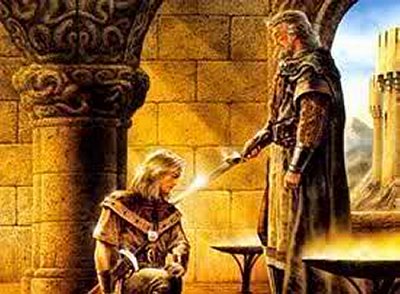
Join Opinion on Facebook and follow updates on /roomfordebate.
Chivalry code medieval code#
It reflected the French revolutionary ideals of liberty, equality and fraternity dissatisfaction with modernity and a repudiation of the Enlightenment ideas of rationality, progress and science.Īs society has continued to evolve and many Americans and Europeans have rejected the idea of the “fair and weaker sex” as a code for economic, political and social inferiority, this romantic conception of chivalry has faded, just as its progenitor disappeared with the passing of the society that produced it. The modern popular idea of chivalry derives from a Romantic image of the Middle Ages created in the late 18th century by novelists like Sir Walter Scott.

Today "chivalry" is often used as a term for “gentlemanly” behavior, manifested through courtesy toward the "fair sex," honor, courage, loyalty, athletic prowess and fighting "fair" - all of which have been effectively parodied by Monty Python. (Foot soldiers, on the other hand, were fair game.) Since the main military activities of medieval warfare, ravaging and sieges, were mostly directed against civilian populations, spectator tournaments - featuring knights "fighting" under the different banners of their lords - became the primary theater for displays of chivalric prowess. A knight who vanquished another knight was to hold him for ransom rather than kill him. Chivalry promoted violence, although it channeled and moderated it. Prowess remained, however, a knight's central quality. In the High Middle Ages, this Code of Chivalry was a guideline for knightly behavior both on and off of the battlefield. The term, chivalry, comes from the medieval French word, cheval, meaning horse. The word chivalry comes from the french word chevalier meaning horsemen a knight or a young man. As the unbridled barbarian ferocity began to be tempered with Christian teachings, the idea of knighthood began to develop. He was to be an ornament in his lord’s court: affable and restrained, eloquent, and skilled in music, the hunt and the art of courtly flirting. Chivalry The code of conduct includes honor, honesty, courteousness, and bravery. The medieval chivalric knight was expected to be both a warrior and a courtier. This munificence was an expression of the dignity of the noble estate, emphasizing the gulf in values between those who fought and those who worked, even if the latter happened to be wealthier than the former.

Spending money freely demonstrated generosity to one’s friends and supporters. Rounding it out was an attitude toward money that was consciously antibourgeois. History of Chivalry In the 11th-Century 'The Song of Roland,' also known as Charlemagnes Code of Chivalry, described 8th-Century battles and also a knights duties.

The practice originally combined the virtues of the feudal warrior - skill in combat, courage and loyalty to one's lord - with courtliness and Christian values. Chivalry evolved from the Old French chevalerie, which meant 'noble knight' combined with the Medieval Latin caballarius, or 'horseman.' It originally applied only to knights.


 0 kommentar(er)
0 kommentar(er)
